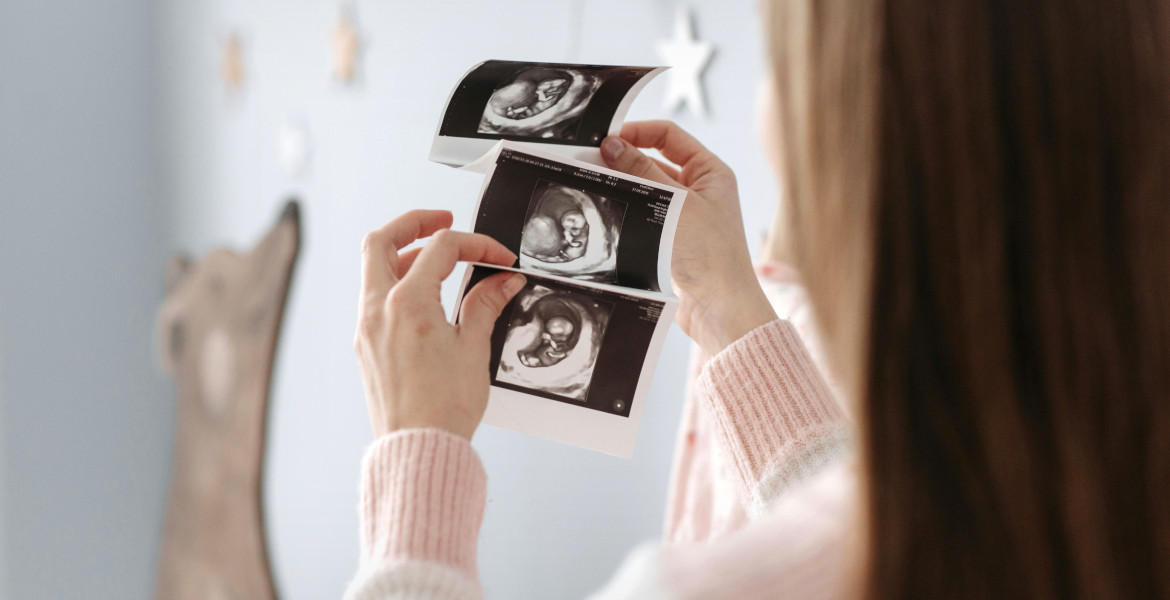Nutritionist Fredrik Paulún, author of The Light Revolution (Ljusrevolutionen), says there are many serious misconceptions about the sun. One of the best things you can do for your health, Paulún says, is to make sure you get enough sunlight.
– We shouldn't burn ourselves, but we should be in the sun as much as possible, he says.
Here are Paulún's best tips and observations for the sunniest months of the year.
Fredrik Paulún is perhaps one of Sweden's best-known health profiles and a trained nutritionist. In The Light Revolution, he describes how the sun, and especially light, is directly vital to us. While elsewhere people are often encouraged to sunbathe cautiously, he argues instead that people in Sweden today generally have a sun or light deficiency and should make sure they get much more sunlight.
Among other things, he explains that endorphins are produced when sunlight hits the skin, which he believes shows that the sun is beneficial to humans. What we are naturally attracted to is often based on the production of endorphins, and Paulún says it is perfectly logical to assume that the sun is necessary for human survival. According to the health expert, the sun's bad reputation is "completely undeserved" and is at least as important for health as exercise and a good diet.
Sick without sun
Paulún believes that the sun has a positive effect on the entire body system, from the brain to the organs. In particular, it increases the energy production of the body's mitochondria, whose function is to convert energy from food. "A lot of diseases have a 'bone' in poor mitochondrial function", says the health expert.
– Without mitochondria, we're screwed, he says in the podcast Health for the Unhealthy (Hälsa för ohälsosamma).
Paulún believes that the advice to avoid the sun is actually making us sick. Among other things, he points to a large number of studies that have been done comparing where you live on Earth, where latitude 0 is the equator, and it has been found that, for example, the autoimmune disease MS is almost non-existent at the equator, in other words, where there is a lot of sun. The disease increases the further away you are from the equator, where, for example, Sweden is quite affected by the disease.
The same goes for high blood pressure, which according to the health profile is more prevalent in countries further from the equator, where there is less sun. This is partly because the sun stimulates the production of nitric oxide, which dilates blood vessels and reduces the risk of cardiovascular disease. In addition, mortality rates during the winter months are reported to be about 25% higher in countries far from the equator.
Sun avoidance as bad as smoking
Lack of sunlight can also contribute to increased body weight. Paulún also says that the risk of autoimmune diseases in particular is significantly reduced by getting enough sun, and that those who suffer from them can improve their symptoms by getting plenty of sun.
According to the profile, other research suggests that avoiding the sun carries the same risk of premature death as smoking. According to other research, after 20 years of sun exposure, people are generally 40% less likely to die from all forms of cancer.
The sun also stimulates the immune system, which reduces the risk of respiratory infections. Paulún points out that the sun also has a big practical impact when it comes to COVID, saying that in Sweden, people with darker skin are more affected by the disease because they have a higher need for sunlight.
– We now know that the sun also had a great impact on how severely ill people became from covid, for example, many people with darker skin died. This is a very important aspect when we talk about human health. We have different sun needs.
No sun protection factor
A large number of researchers and experts believe that sun protection is essential, and preferably as high a factor as possible. Dermatologist Petra Kjellman, for example, recently advised Swedish state broadcaster SVT to use at least SPF 30 or 50 during the summer.
However, Paulún argues that sunscreens can actually increase the risk of skin cancer because they remove the natural instinct to retreat from the sun. For example, a large study involving 50 regions and countries found that the more UV light you get without sunscreen, the less likely you are to develop the skin cancer malignant melanoma.
- Because it protects us, it is a hormetic stressor. It is simply a repair of the skin cells, he says.
He also points out that some sunscreens contain chemicals and endocrine disruptors that are absorbed into the skin. He says that while sunscreen protects against burning, it doesn't protect against things like cancer or sun-induced wrinkles.
- Wearing sunscreen in Sweden is terrible, he says.
On the other hand, Paulún admits that he might use sunscreen on extremely rare occasions, it might be a bit on the nose when he goes out to sea. Otherwise, he avoids it altogether.
Sunbathe smart
Although natural sunlight is beneficial to health, too much UV radiation can cause damage to biological tissues. This can lead to sun damage, increased risk of malignant melanoma and skin aging. Paulún also mentions a study of 29,000 Swedish women in the southern part of the country. The women were divided into non-tanners, moderate tanners and active tanners. The women who were active tanners had a 1.1% risk of developing malignant melanoma, while the non-tanners had a 0.8% risk - in other words, a very small margin. However, the study found that the mortality rate was lower among active tanners than among non-tanners. For those who did not sunbathe, the mortality rate for skin cancer was nearly 36%, compared to only 11% for active sunbathers.
However, it is important not to get too much sun and not to burn yourself, Paulún emphasizes. "What you should focus on is building up a good tan, then you will not burn so easily. If you build up a good tan, you have protection equivalent to about 10 to 15 SPF", he says. It is also important to be logical and sunbathe in moderation, get out of the sun if you get too much, and wear a hat and protective clothing. Have children wear UV protective clothing and a hat or cap.
– UV light just makes us feel good, says Fredrik. It is important. But we can also burn ourselves. So it's important to find the right balance.
Morning sun the best
The most beautiful part of the day is the morning, according to Paulún. The sun is low and the UV light is filtered in the atmosphere, so almost nothing reaches you. At the same time, your body wakes up in the morning and your eyes get light. The sunlight is also milder in the evenings.
The sun is strongest during the day and if you want to avoid burning, it is probably best to sit in the shade or indoors if you are in even warmer latitudes such as Australia.
Vitamin D
UV light triggers the production of vitamin D, and Paulún says research suggests that naturally produced levels of the vitamin and high sun exposure are linked to the same health effects. However, supplements of the vitamin do not have the same effects. Studies show that vitamin D supplements reduce mortality from all causes in humans, but do not protect against diseases such as Alzheimer's and type 2 diabetes. The health profile says that supplements can't replace light, and if you have low levels of the vitamin, you probably don't get enough sun.
Red light in winter
In Sweden there are few hours of sunshine during the winter, but Paulún still encourages people to try to get sun on their skin on the days when it is available. However, red light lamps can also be used in winter as a dietary supplement, which he strongly advocates.
In his book, Paulún explains that the sun emits electromagnetic radiation, which includes different forms of light, including ultraviolet (UV), in different wavelengths. The sun emits light in all the colors of the rainbow, but when all the wavelengths are mixed, the light looks white, for example, you can often see more red light in the evening, then you can often see more blue light during the day.
The red light, according to the health profile, is the one that produces the most biological effects. Red light lamps are available for home use and are also used in treatments. Paulún himself has a red light lamp at home that he routinely sits in front of for about 15 minutes every morning.
Fredrik Paulún

Nutritionist and writer, born July 20, 1970, who frequently appears on television, in newspapers and on radio programs. Paulún is also known for introducing Swedes to the now famous GI diet.
Paulún's brand was launched in Sweden in 2005, but since 2010 it has been owned by Orkla Foods Sverige AB.
He has written about 20 books on nutrition and health, including 50 Shortcuts to a Sugar-Free Life, The Truth About GI and LCHQ. His latest book, The Light Revolution (Ljusrevolutionen), was published last year.




